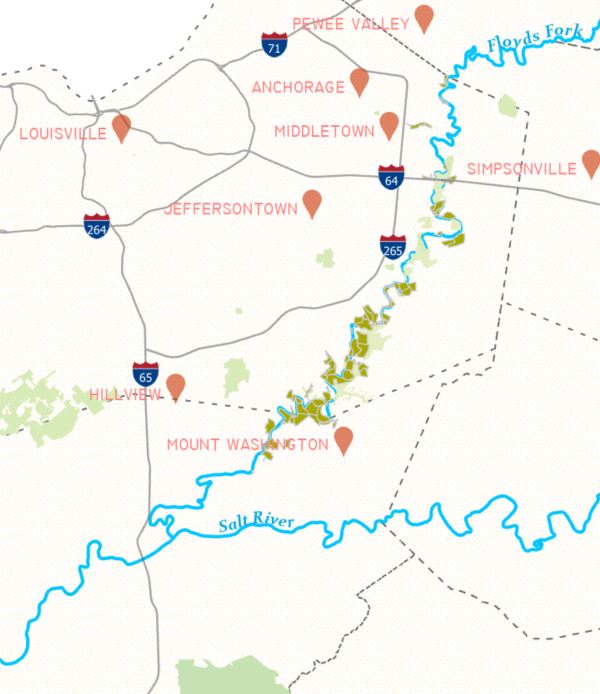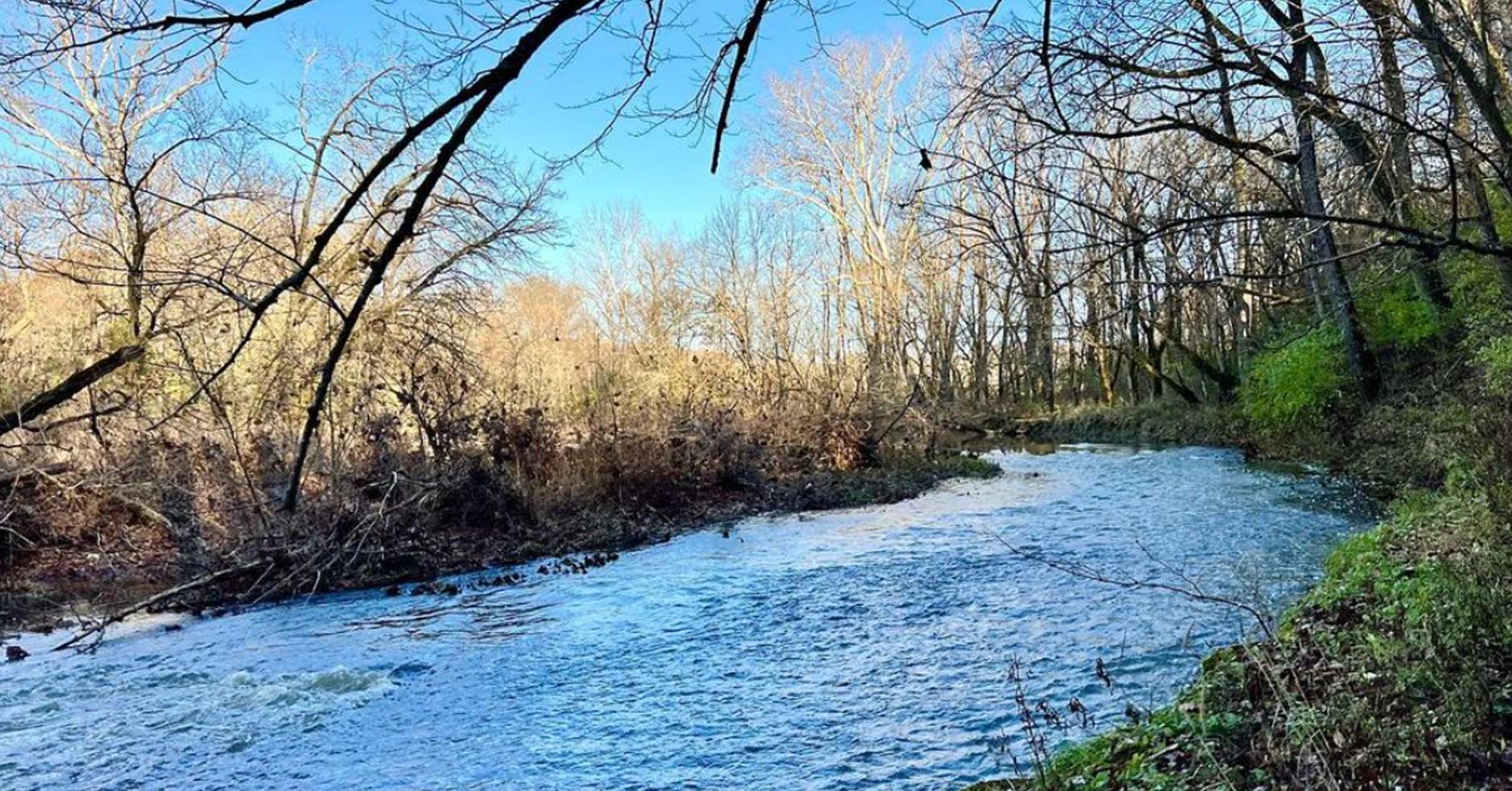LOUISVILLE Thirty years ago, the efforts to preserve the Floyds Fork watershed sparked a massive conservation movement in Jefferson County. This movement largely began with members of the medical community recognizing that the quality of our environment had a direct impact on the quality of our health. Together with the help of a wellknown community leader and philanthropist, Mary Bingham, I gathered the support of my colleagues and created the Future Fund, Inc. Mrs. Bingham, wife of Barry Bingham, Sr. who owned WHAS Radio and TV as well as the Courier Journal newspaper equally recognized the need to preserve our land and our health. These voices and partnerships helped to create a system that has today saved over 6,500 acres of conservation space, agricultural land and what many know today in part as the Parklands of Floyds Fork. But it all began with the recognition that health and environment go hand in hand.
I was raised in Western Kentucky and attended Western Kentucky University (WKU), a regional area rich with agriculture and land. After completing my undergraduate degree, I arrived as a medical school student at the University of Louisville School of Medicine, a region rich in concrete. After expressing dismay over the lack of green space on campus, my classmates quickly introduced me to the local Olmstead Parks; Cherokee/ Seneca and its 800 plus acres of green space. I was amazed at how well the parks were integrated into urban areas, rendering the concrete city landscape seemingly nonexistent. The parks became our mental and physical refuge from the daily grind of medical school internship and residency. However, we saw a need for more green space especially as urban sprawl was beginning to threaten our more rural areas in the county.
A significant number of our medical school class remained at UofL for internships and, in my case, I stayed, specifically for orthopedic residency. Together, with a handful of my classmates, Ed Tillett (Orthopedics), Ken Hodge (ENT), David Easley (Psychiatry), Janet Day (OB/GYN), and Russ Williams (General Surgery), who was also the medical society president, we began advocating for additional park space in the outer boundaries of Louisville. We saw the need for a second generation of Olmsteadian parks. With their support and encouragement, I was convinced that one of the only ways to make this happen was to involve myself in the process of government and run for one of three commissioner seats in county government. My platform was based on a vision for future city planning which called for a new generation of parks and green space on the perimeter of Louisville. I ultimately won and became the A District Commissioner for Jefferson County. Out of the gate I wanted to set an example about the need to take ownership over our environmental issues at home and immediately converted my car to a natural gas flex fuel vehicle to highlight the importance of clean air. We went on to establish the Clean Fuels Coalition and then started the process of protecting the Floyds Fork watershed. Having served as the president of the Tyler Park Association and understanding the impact of parks on our health I was motivated by my fellow physicians and colleagues, who also grew up near Cherokee Park, to advocate for restrictions to developments near the Floyds Fork watershed.
Needing an additional ally, I called upon David Jones, healthcare executive and co-founder of Humana. Both of us agreed on the need for future green space to promote health lifestyles, exercise, clean water, and clean air. Major contributions from Humana assisted in additional land purchases that have helped to make the Future Fund the largest nonprofit landowner in Jefferson County. By the end of 1994, the Jefferson County Fiscal Court passed a comprehensive protection zone along 80% of the southern course of Floyd’s Fork Creek. The plan or Design Review Overlay (DRO) was designed to limit development along the riparian zones along the 31 miles of Floyds Fork Creek in eastern Jefferson County. The plan provided set back of residential development to limit run-off of fertilizer and roadway pollutants. Riparian zones provide a natural filtration of such pollutants. The DRO further restricted filling of the floodplain to allow for development close to the creek. With the protection of the DRO, the Floyds Fork, Inc. purchased thousands of acres of flood plain over the next 25 years. A decade later, David Jones and his son Dan would lead another equally important mission to establish the Parklands of Floyd’s Fork with a significant component of the greenway being comprised of land from the Future Fund, Inc. Together, we had a reason to celebrate and expect that future generations of government would remember and recognize the positive impact these conservation movements had made on our community.
Government, however, has had a very short memory. Unfortunately, significant development under Mayor Fisher’s administration through the office of Planning & Development has threatened years of environmental progress by allowing high density development in the flood plain and within yards of Floyds Fork.
It seems that once again, our medical community is needed to remind government about the impact of clean air and water on the health and well-being of our community and its people. As physicians must continue to advocate for our patients, fellow citizens and even ourselves. If we want and expect a sustainable environment that promotes sustainable health, we must participate in discussions which influence the outcome for future generations.
Personally, my own physician challenges me to exercise more to raise my HDL and moderate my triglycerides and cholesterol. He also advocates for a healthier high fiber  diet with fewer calories to lower my blood glucose and A1C levels. He recommends drinking no less than 2.5 liters a day to promote healthy renal function, and I completely agree with all of his recommendations. However, I also must consider the environmental effects on my lungs and heart when I run or bike in our parks. Louisville routinely reports air quality index levels above the World Health Organization’s (WHO) air quality standards. While medicine can play a substantial part in keeping us healthy, our environment also has its role…whether it will be a positive or negative one is up to us.
diet with fewer calories to lower my blood glucose and A1C levels. He recommends drinking no less than 2.5 liters a day to promote healthy renal function, and I completely agree with all of his recommendations. However, I also must consider the environmental effects on my lungs and heart when I run or bike in our parks. Louisville routinely reports air quality index levels above the World Health Organization’s (WHO) air quality standards. While medicine can play a substantial part in keeping us healthy, our environment also has its role…whether it will be a positive or negative one is up to us.
In June of 2022 the AMA adopted a new policy declaring climate change a public health crisis. In fact, AMA board member Ilse Levin stated, “Taking action now won’t reverse all of the harm done, but it will help prevent further damage to our own planet and our patient’s health and well-being.”
Clearly, physicians as a whole have ignored the obvious threat to our patient’s health by ignoring the quality of our environment but it’s not too late to join us. Together, we can continue to impact our local community by saving Floyds Fork one acre at a time. For more information, please visit www.savingfloydsfork.org or call Future Fund, Inc at 502.376.1967.


